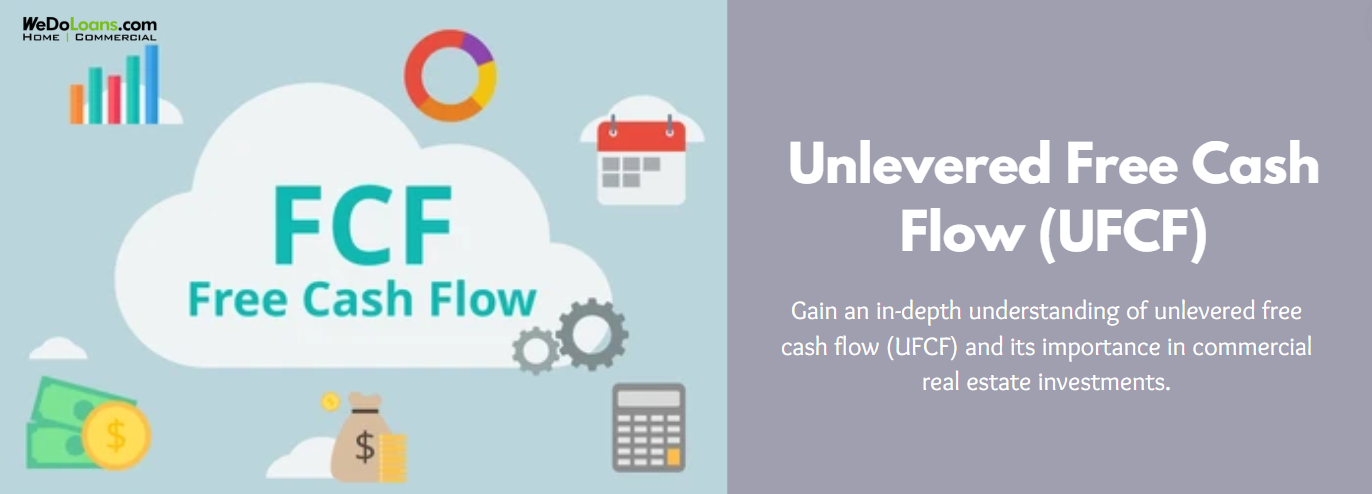
Real estate investments require thorough evaluation using a range of metrics. One metric that has gained traction in recent years is unlevered free cash flow (UFCF), which offers a distinct perspective on a property’s financial performance by focusing on its cash flow generation.
Understanding Unlevered Free Cash Flow in Real Estate
Unlevered free cash flow calculates the cash flow generated by a commercial property without factoring in debt service costs. It reflects the cash available from a property’s operations before accounting for any loan-related interest or principal payments.
In simpler terms, if an investor paid for a property in full without using any loans, the unlevered free cash flow represents the amount of cash the property would generate.
The Purpose of Unlevered Free Cash Flow
Why focus on unlevered free cash flow? This metric isolates the property’s cash-generating ability without the influence of financing costs. It provides an undistorted look at the operational performance of a property.
By excluding the effects of debt, investors can compare properties fairly, regardless of their individual financing structures. This approach enables an objective evaluation of a property’s potential to generate cash, based solely on its operational efficiency.
Although investors will eventually factor in all costs, including financing, starting with UFCF provides a clearer understanding of a property’s potential and facilitates better comparisons when evaluating multiple opportunities.
Levered vs. Unlevered Free Cash Flow: Key Differences
When measuring cash flow, there are two key types: levered free cash flow (LFCF) and unlevered free cash flow (UFCF). While “cash flow” generally refers to LFCF if not specified, it’s important to understand both.
Levered Free Cash Flow
Levered free cash flow is the cash generated by a property after accounting for both operating expenses and debt service costs. It reflects the cash available to owners after fulfilling all financial obligations, including those to lenders. This provides a realistic picture of the cash flow available to equity holders.
Unlevered Free Cash Flow
In contrast, unlevered free cash flow excludes debt service obligations. It considers all revenue and operating costs, but it does not factor in financing payments, offering insight into the property’s overall cash-generating potential before any debt-related deductions.
Unlevered Free Cash Flow Formula
To calculate unlevered free cash flow, you need to know the net operating income (NOI) and capital expenditures (CapEx). These figures may involve estimates, especially when projecting changes to a property.
The UFCF formula is straightforward:
UFCF = Net Operating Income (NOI) – Capital Expenditures (CapEx) – Change in Working Capital
Net operating income represents the revenue from a property after accounting for operating costs but before accounting for debt service. Capital expenditures include costs for maintaining or improving the property, while changes in working capital reflect fluctuations in short-term assets and liabilities related to the property’s operations.
Example of Unlevered Free Cash Flow Calculation
Consider a property that generates $200,000 in net operating income and requires $50,000 in capital expenditures. If there is no change in working capital, the UFCF would be:
UFCF = $200,000 (NOI) – $50,000 (CapEx) = $150,000
This calculation shows that the property generates $150,000 in annual cash flow, without accounting for any debt service.
Benefits and Limitations of UFCF in Real Estate
Unlevered free cash flow offers several advantages to real estate investors. By excluding debt costs, UFCF allows for:
- Direct comparisons of properties with different financing structures.
- A clearer view of a property’s operational profitability, unaffected by debt.
However, UFCF has limitations. By excluding interest and principal payments, it may present an overly optimistic view of available cash, especially for heavily leveraged properties, which could lead to an overestimate of actual cash available to owners.
While UFCF is a useful tool, it should not be the only factor in making investment decisions. A broader analysis that includes levered free cash flow and other financial metrics is essential.
Conclusion
Unlevered free cash flow is a valuable measure of a property’s intrinsic cash-generating potential, independent of its financing structure. While it provides a useful perspective, UFCF should be considered alongside other financial metrics when evaluating real estate investments.
For a comprehensive analysis of a property, begin by using UFCF to compare various opportunities without the influence of financing. Then, incorporate levered free cash flow and other metrics to gain a complete understanding of the investment’s potential. Successful real estate investing requires a holistic approach, and UFCF is one part of the equation all investors should consider.
